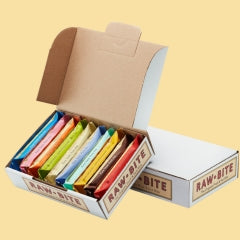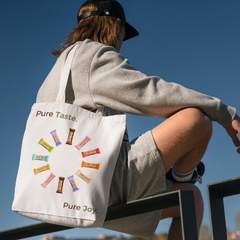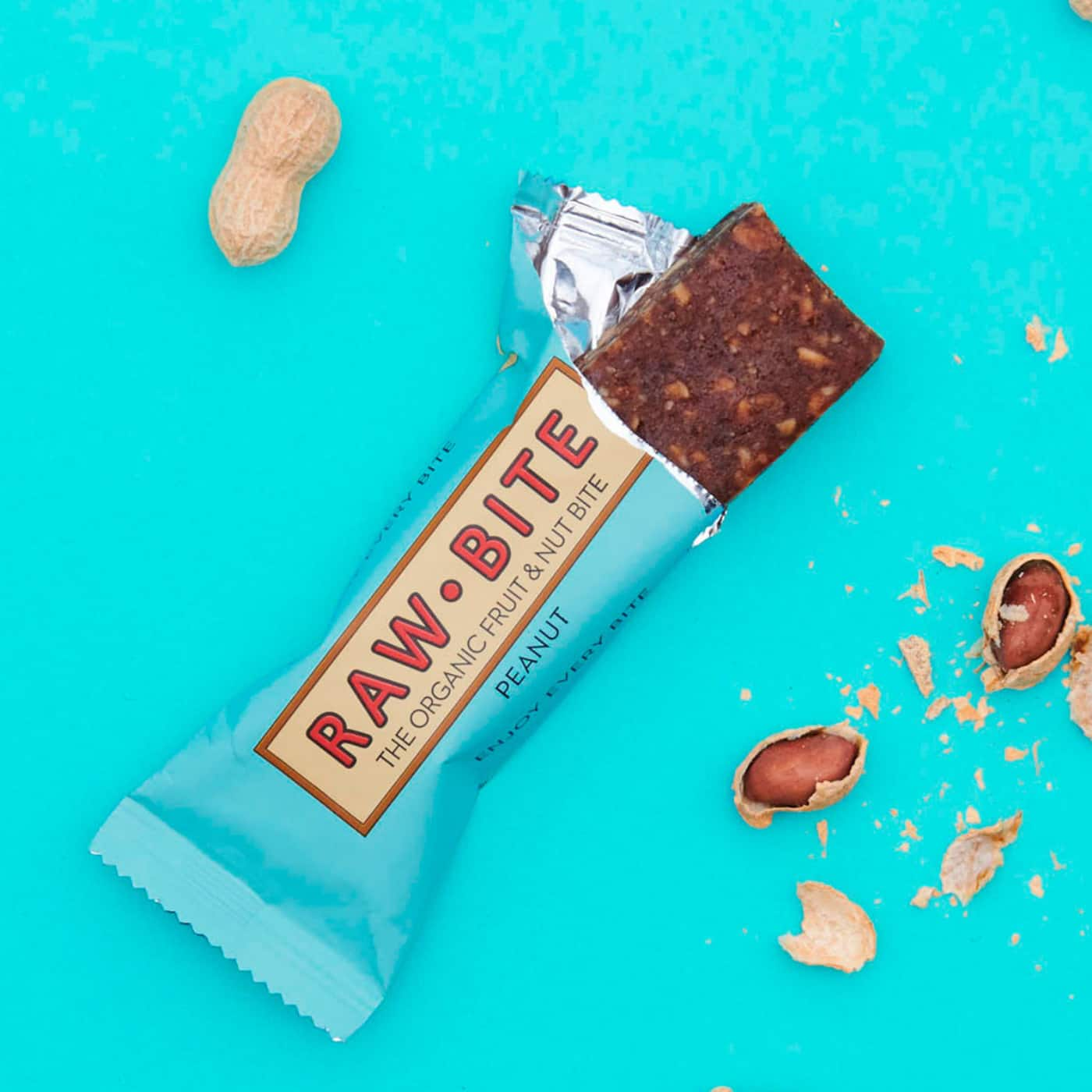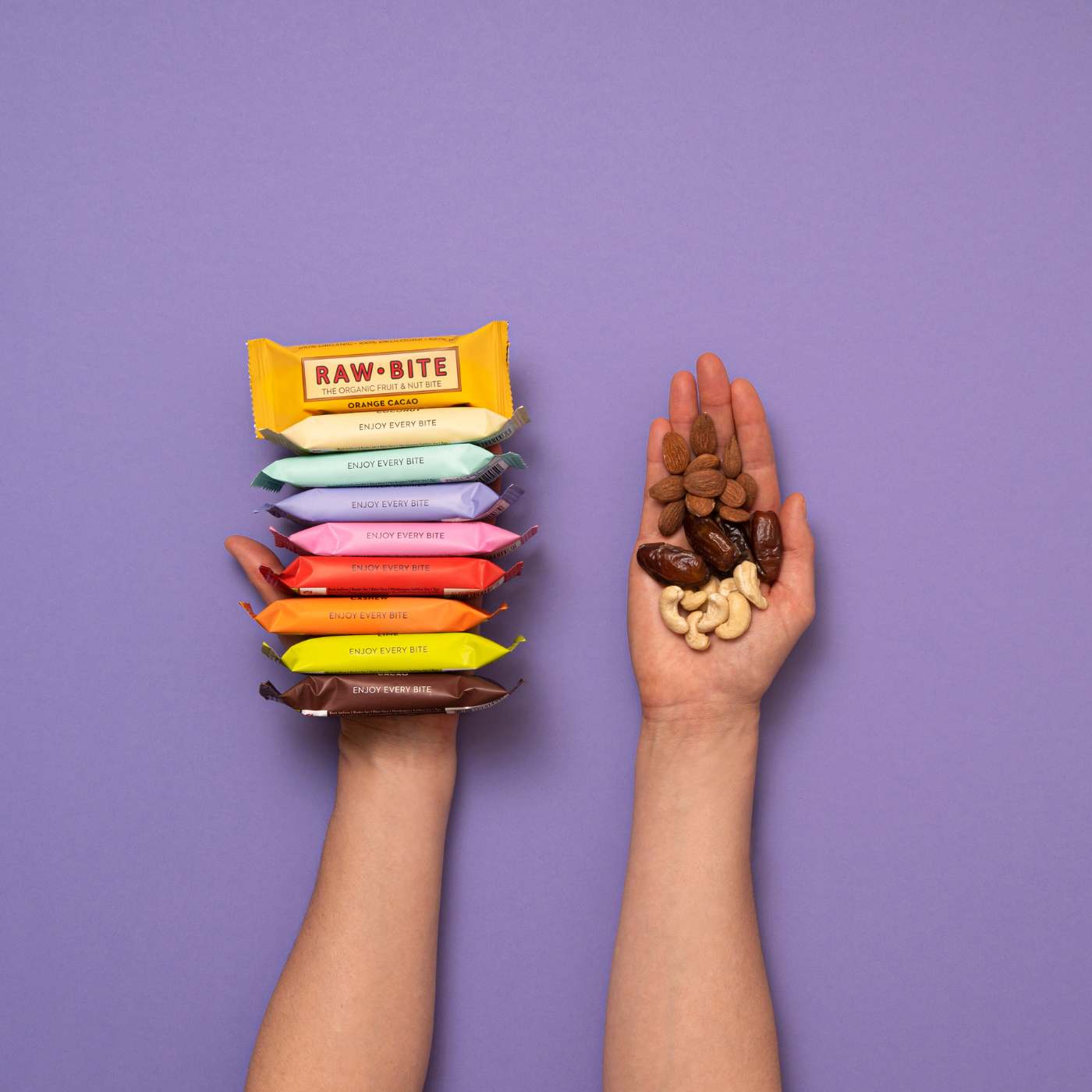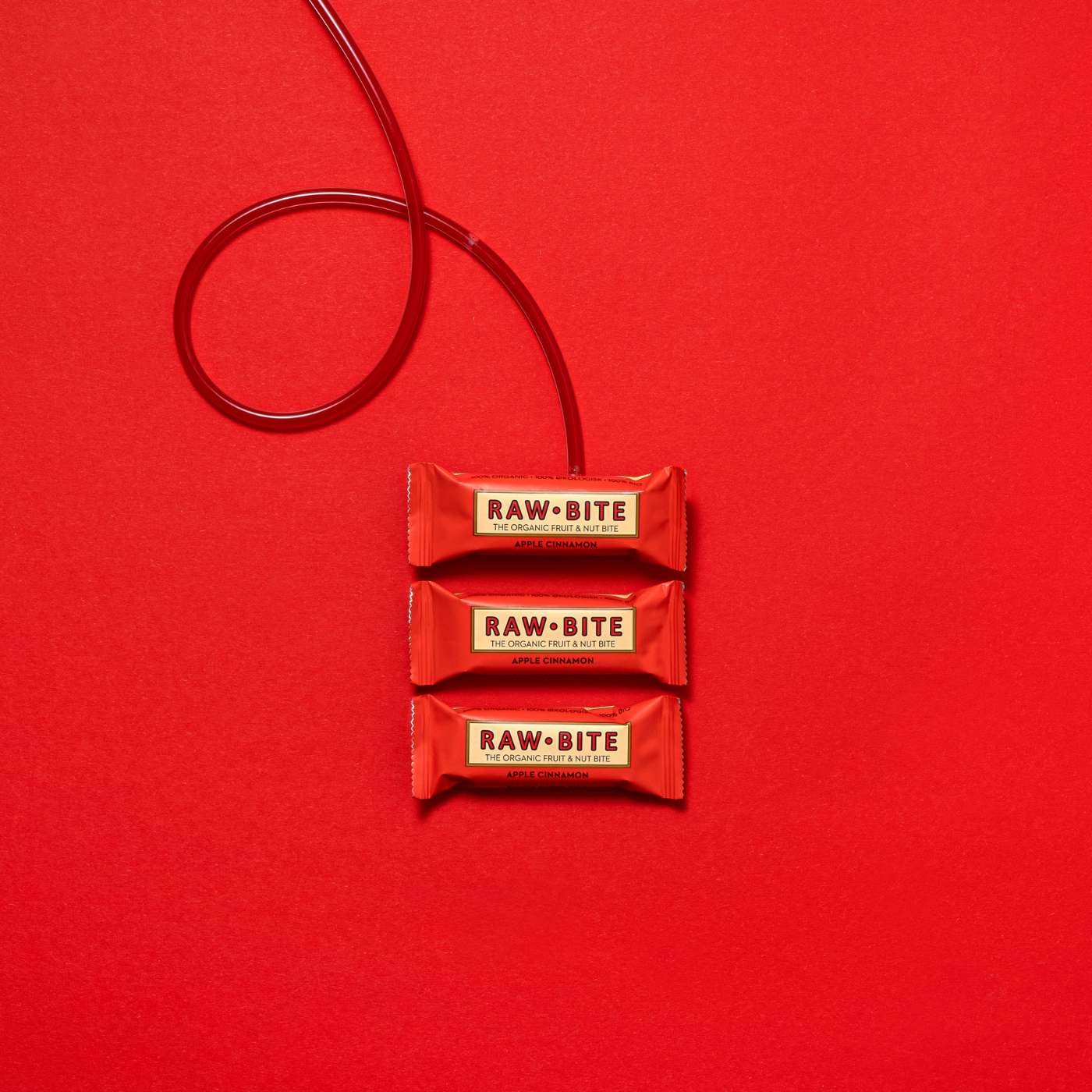Sustainability and environmental protection are two topics that are incredibly close to our hearts at RAWBITE. Finding the right materials to achieve a balance between sustainability, food safety and great flavour is way up at the top of our list of priorities. Our aim is always to preserve the quality of our premium ingredients for as long as possible and, this way, help to prevent food wastage. Our current packaging plays a major role.
The process of making our foils more sustainable has thrown up quite a few challenges, which we want to share with you here.
What kind of packaging does RAWBITE use?
For our organic bars we use the finest ingredients to achieve the best quality. The foil we currently use is made of polyethylene terephthalate (PET) and it provides optimum protection for our bars as well as complying with regulatory requirements. This means that your RAWBITE bar is protected against temperature fluctuations, so that you can enjoy it in the heat of the desert or the freezing temperatures of the Arctic without it melting, crumbling or losing any of its fantastic flavour and quality.
Our bars come with a guaranteed shelf-life of 365 days, meaning that food waste doesn’t stand a chance.
Of course, there are also a few other packaging materials involved: the most frequently used material in our supply chain is recycled cardboard, which is used to make all our transport boxes.
Biodegradable? Compostable? Bioplastics packaging?
You may have seen other food manufacturers advertising the fact that they now use sustainable foils.
We want to explain why we haven’t yet taken this step for our foils.
Materials that are biodegradable and/or made from renewable raw materials (also called biobased) are often referred to as bioplastics.
Bioplastics come in a number of different compositions: fossil-fuel based and biodegradable (PBAT), biobased and biodegradable (PLA, PHA, PBS) or biobased and non-biodegradable (PE, PP, PET). (1,2)
As you can see, the term biobased can be misleading, because it doesn’t necessarily tell you whether the material is also biodegradable. (1,2,3)
Biodegradable means that an organic substance can be degraded by microorganisms. This decomposition can take place either with oxygen to yield carbon dioxide, water, mineral salts and biomass, or without oxygen to yield carbon dioxide, methane, mineral salts and biomass. (3)
A packaging is only composable if is biodegradable. This process depends to a large degree on factors such as temperature, oxygen supply, moisture and time.
Packaging that is both biobased and compostable could, for instance, be made of cellulose, which is a renewable material.
Sounds like a good solution? Yes, but only up to a certain point, because the waste disposal system in many countries presents the next set of challenges. The present waste management systems cannot recycle this type of packaging, meaning that it inflates the waste problem rather than offering a solution to the issue of too much waste. Take a look at the following overview to see why.
Waste separation systems and the inherent problems
Plast / metal, organic waste bin, paper bin and residual waste bin are the main separation points for the disposal of packaging. Always ensure that you separate waste into the correct streams, as this makes a considerable contribution to recycling and protecting the environment.
Since waste disposal is organised by the local authorities, you should contact your municipality to find out which disposal regulations apply.
Plast / Metal:
Packaging made of plastic, metal and composites belongs in this bin. After disposal, the different materials are separated and then recycled so that they remain in the cycle. The resulting plastic granulate, called recyclate, can be used to make new packaging, storage boxes and many other items (4).
Paper bin:
As the name says, this is the bin for paper and cardboard. The mixture of waste paper is separated into different types in paper sorting plants and are subsequently sent to paper mills for processing (4).
Residual waste:
The residual waste bin is for any rubbish that cannot be recycled (e.g., wallpaper scraps, cat litter or sanitary products). This waste to taken to an incineration plant and burned without being sorted. This process means that not only are these materials lost to the cycle for ever, but climate-damaging CO2 is also emitted during incineration (3,5).
Organic waste:
Organic waste from private households (e.g. food scraps, tea bags, coffee grounds) is collected in the organic waste bin (4,5). Further down the line, this waste is used to produce compost and digestate in composting and fermentation plants, and energy can be generated in biogas plants.
Currently, however, compostable packaging is removed from your organic waste in the sorting process. This means that even if the packaging is biodegradable, it should not be placed in the organic waste bin.
The term “compostable” refers only to processing in your own home compost.
If you do not have your own compost, you should dispose of compostable packaging, for example foils made of cellulose, in the yellow bin or with the residual waste.
Good to know: our RAWBITE packaging belongs in plast/metal. The transport boxes are 100% recyclable and should be disposed of in the waste paper bin.

Our goals for the future
Unfortunately, our packing is not yet quite as sustainable as we would like it to be. Our goal for the future is to change this as rapidly as possible and find an alternative that offers the same protective properties. We are currently actively collaborating with a number of business partners to improve our foil and make it more sustainable.
Food manufacturers in particular have to take multiple factors into consideration when choosing their packaging materials. The contents must be adequately protected during transport and storage. Preserving product quality, its shelf-life and product safety are other important factors. It goes without saying that the packaging should never release any harmful substances into the food. And, on top of all that, RAWBITE bars are sold in 30 countries with different climate zones, and each country has different requirements for the protection of food products which must be strictly observed.
Switching to a different type of packaging is not something that can be done from one day to the next, and it requires a huge set of different tests, both internally and externally. We regularly test different options, but it takes time and patience to develop the right solution.
Before we change anything, we want to exploit the full potential of one alternative to ensure that food wastage isn’t an issue for us. We don’t want to compromise simply for the sake of a bit of greenwashing; instead, we want to pick a packaging product that ticks all the boxes and where we can be 100% certain that we can continue to guarantee product safety. At the end of the day, protecting our bars and protecting you are our topmost priority.
We hope that waste disposal and recycling really takes off around the world, as this will open up new developments in packaging materials. Until then, please bear with us while we search for the very best new packaging solution!
Pure Taste. Pure Joy.
Sources:

